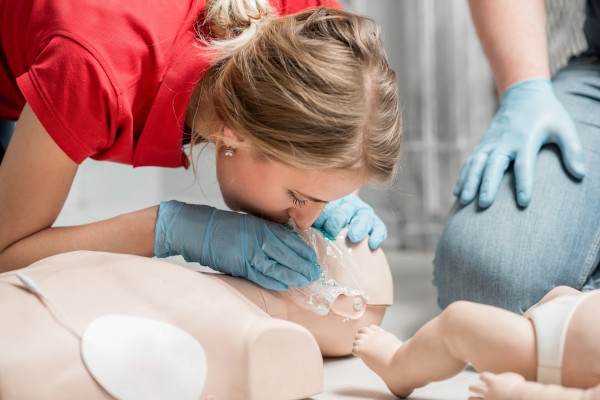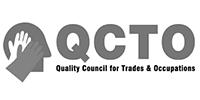Blog Post
First Aid Training: How To Perform CPR

First aid training can equip you with the knowledge and skills needed to respond to emergency medical situations. This article will focus on how to perform CPR, when you should or should not perform first aid, as well as why people should take part in first aid training.
Are you curious about how you would respond in an emergency without first aid training? This can be a scary situation to be in. Luckily, our training facilities can help prepare you for emergencies. Emcare is an exceptional company that assists many people with different training courses including first aid training and fire marshal fighting.
First Aid Training: Performing CPR
If you find yourself in a situation where someone needs cardiopulmonary resuscitation (CPR) it is important to know the steps that are involved. There are six basic steps to follow during this process:
-
Have someone call an ambulance or emergency services. After this, assess the situation and ensure
that
there are no other factors that may put you in danger, such as traffic or fires.
-
Lay the individual carefully on their back and open their airway. Tilt their head back by lifting
their
chest gently. Then open their mouth to check if their airway is open. There may be obstructions such
as
food. Try to remove any loose obstructions. If the obstructions are stuck, trying to remove them may
cause
more damage.
-
If the individual is not breathing, you will need to start CPR.
-
Perform 30 chest compressions. Place your hands on top of one another then clasp them together.
Ensure
your elbows are straight and with the heels of both hands, push down hard and fast in the centre of
the
individual’s chest.
-
Perform two rescue breaths. Make sure there is nothing in their mouth, tilt their head back, lift
their
chin, pinch their nose, place your mouth over theirs, and then blow to make their chest rise.
-
Repeat this process until an ambulance arrives. Continue the process of 30 chest compressions and
two
rescue breaths until professional help arrives.

If you must perform CPR on a child, you should only use one of your hands to perform chest compressions, then place your hand on the sternum in the centre of the child’s chest. Then press down hard and fast around 5.08cm deep.
This should be done a minimum of 100 times per minute. In the case of an infant, you will only need to use two fingers. You will need to perform 30 quick chest compressions around 3.81cm deep.
When You Should And Should Not Perform CPR
In the case of adults, CPR should be performed when they are not breathing at all, while for a child or infant CPR should be performed when they are not breathing normally.
For an individual that is not breathing, performing CPR may help oxygen-rich blood travel to the brain. Without oxygen, individuals may sustain brain damage or die. CPR may need to be performed in the following situations:
- Heart attack or cardiac arrest
- Choking
- Car accident
- Suffocation
- Drug or alcohol overdose
- Near-drowning
- Poisoning
- Smoke inhalation
- Sudden infant death syndrome

If an individual in an emergency is breathing normally, CPR is most likely not necessary. If the individual is breathing normally this means that oxygen is reaching the brain and the heart is pumping normally.
5 Reasons Why First Aid Training Is Necessary
Having basic knowledge regarding first aid can help you in many emergencies. Here are 5 reasons why first aid training is necessary for all individuals. These five reasons include:
-
It does not only save lives it also helps reduce recovery time when administered correctly. It can
also
play a role in whether an individual has a long-term or temporary injury. You will also learn how to
appropriately handle emergencies.
-
Helps increase patient comfort. Using simple techniques such as using an ice pack or bandages when
needed
may help relieve patient discomfort. Not all accidents will require individuals to go to the
hospital.
-
Equips you with important tools to prevent the circumstances from becoming worse. If some patients
do not
receive immediate first aid, their situation may become worse. Providing basic first aid will allow
you to
stabilise them until medical attention arrives.
-
First aid training will give you confidence in your abilities and skills regarding administering
first
aid. This training allows you to reflect on yourself as well as how individuals react in specific
situations.
- First aid encourages safe and healthy lifestyles. Emcare’s first aid course teaches individuals that they need to look after themselves as well and consider their safety. Safety is important. Ensuring that you are safe means that you are in a position to help others.

Emcare specialises in health and safety. We were founded in 1997 and offer a variety of training courses which include first aid, firefighting, emergency evacuation, emergency medical, and health and safety training.
We will ensure that you are prepared for specific emergencies. Our training courses will provide you with the necessary skills to keep yourself and others safe.
What Is The Primary Survey?
This is a quick and easy way to assess emergencies and teach you how to respond to life-threatening situations. The acronym DRABC stands for danger, response, airway, breathing, and circulation.
-
Danger – before approaching the situation, make sure the area is safe. Look out for
traffic, fires, and
anything that may put you or others in harm’s way.
-
Response – check if the individual is responsive. When approaching them, introduce
yourself and ask them
questions. If they respond, open their eyes or provide a gesture, this means they are responsive.
-
Airway – check their airway to see if it is open. You will need to open the airway
by gently tilting their
head back by placing one hand on their forehead and using two fingers from your other hand to tilt
their
chin up.
-
Breathing – check if the individual is breathing normally. Hover your ear above
their mouth and look down
their body. Listen for breathing sounds, see if their chest is moving and if you can feel breath on
your
face.
- Circulation – if you have established that the individual is breathing you will need to check for severe bleeding. If you find signs of severe bleeding, you will need to control and treat this by applying pressure.
If the individual is unresponsive, breathing, and not bleeding, you will need to put them in the recovery position and phone an ambulance.

What Can You Do In An Emergency With No First Aid Knowledge?
If you do not have first aid training and find yourself in an emergency there are a few things that you can do and a few things that you should not do. The things you assist with include:
- Take a few deep breaths and try to calm down. These situations can be scary.
- Phone 10111. You will need to phone the police to get the necessary help.
- Tell the operator that there is an emergency.
- Tell the operator your name and where the emergency is. If you can provide the operator with the exact address do so.
- Explain how the emergency occurred and how many people were injured. This information is important so provide the operator with as much detail as possible.
- Carefully follow all the instructions provided by the operator.
- Stay on the phone until the operator lets you know that it is fine to hang up.
After you have hung up you may feel the urge to help as many people as you can, however, it is important to remember that you should not attempt to move anyone. If you do not have first aid training, you may not be aware of important signs to look out for.
GET IN TOUCH
There are a few ways to reach us below. Please feel free to contact us via phone, email or you can send us a message via the form provided and we will get back to you.




















